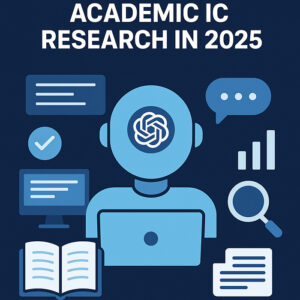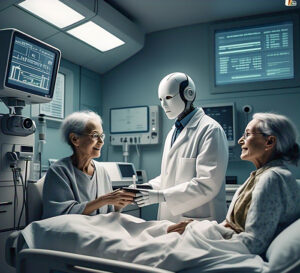Genomic Sequencing: How Reading Our DNA Is Reshaping Science, Medicine, and Agriculture
1. Cracking the Code of Life
Twenty-five years ago the Human Genome Project wrapped up its 13-year, $3-billion sprint with a single, painstakingly pieced-together human genome. Today a benchtop sequencer can finish the same job before lunch for roughly the price of a new smartphone. In practical terms, that speed-and-cost crash has flipped sequencing from a moon-shot experiment into a standard laboratory tool—and that shift is redefining how we diagnose disease, breed crops, track epidemics, and even monitor ecosystems.
2. Sequencing 101: The Technologies in Plain Language
| Era & Tool | What Makes It Special | Typical Use |
|---|---|---|
| Sanger (late 1970s) | Accurate but slow; reads a few hundred bases at a time. | Classic cloning projects; early diagnostic tests. |
| Next-Gen / Short-Read (mid-2000s) | Millions of reads in parallel, each 50–300 bp; cheap and highly accurate. | Whole-genome and exome studies, RNA-seq, cancer panels. |
| Long-Read (2010s) | Single fragments 10 kb–2 Mb; finally resolves repeats and structural variants. | Telomere-to-telomere assemblies, complex plant genomes. |
| Portable / Real-Time (Nanopore) | USB-stick sequencers; data streams while you run. | Field outbreak surveillance, rapid food-safety checks. |
Take-home: No single platform is perfect; many labs “hybrid-sequence,” combining short reads for accuracy with long reads for continuity.
3. Turning Raw Reads into Meaning
Sequencers spit out terabytes of A, T, G, and C. Bioinformaticians then:
Filter & trim low-quality reads.
Assemble the fragments or align them to a reference genome.
Call variants—single changes, indels, big rearrangements.
Annotate what those variants do (or might do).
Interpret the biology, ideally in language a clinician or plant breeder can use.
Today that pipeline leans heavily on cloud computing and, increasingly, machine-learning models that flag patterns humans would miss.
4. Where Sequencing Is Making the Biggest Waves
4.1 Medicine
Precision oncology – Tumors are sequenced routinely to match drugs to mutations; liquid biopsies now pick up relapse months before scans do.
Rare-disease rescue – Rapid neonatal genomes (< 24 h) have ended years-long diagnostic odysseys and guided lifesaving therapies.
Pharmacogenomics – One cheek swab can warn if a blood-thinner or antidepressant will backfire.
4.2 Agriculture
Climate-ready crops – Drought-tolerance genes located by sequencing wild relatives are bred into modern rice and maize.
Healthier herds – Whole-genome–assisted breeding hastens gains in disease resistance and feed efficiency in cattle and salmon.
4.3 Environmental Science
eDNA monitoring – A litre of river water reveals every fish, frog, and invasive zebra mussel that swam by that week.
Bioremediation design – Metagenomes of oil-soaked beaches identify microbes best suited—or engineerable—to chew up pollutants.
5. Recent Breakthroughs You Should Know
2022-2024 highlights
Telomere-to-telomere human reference – At last, a gap-free map of all 23 chromosomes.
2 Mb nanopore read – Proved that ultra-long stretches can be sequenced intact, simplifying repetitive regions.
CRISPR base-editing screens paired with single-cell RNA-seq – Let researchers knock out thousands of genes and watch the transcriptome change cell by cell.
6. The Hard Questions
Privacy – A genome is the ultimate identifier. Who owns it? How long is it stored? Could it be subpoenaed?
Equity – Over 80 % of sequenced genomes still come from people of European ancestry, skewing risk predictions for the rest of the world.
Germline editing – Sequencing guides CRISPR; should we ever rewrite embryos? Most regulators say “not yet,” but the tools exist.
7. What’s Next?
| Horizon | Likely Milestone | Why It Matters |
|---|---|---|
| $100 genome (≃ 2027) | Preventive adult screening at scale. | Catches hereditary risks long before symptoms. |
| Multi-omics in one run | DNA, RNA, and methylation simultaneously. | Brings epigenetics into routine diagnostics. |
| Real-time, implantable sensors | Continuous cell-free DNA monitoring. | Early cancer detection; transplant rejection alerts. |
8. Quick FAQ
Is sequencing the same as a genetic test?
No. Sequencing reads everything; a genetic test usually checks a handful of known sites.
How accurate is it?
Short-read Illumina: > 99.9 %. Long-read nanopore: ~95 % raw, > 99 % after consensus polishing.
What does a whole genome cost right now?
Clinical-grade, 30× coverage: about $800–$1,200 in mid-2025, including analysis.
9. Final Takeaway
Genomic sequencing has slipped from headline news into the scientific day-to-day—yet its ripple effects are just beginning. As costs slide and analysis gets smarter, expect “sequence first, ask questions later” to become the norm from oncology wards to rice paddies. The challenge is no longer whether we can read the code of life, but whether we’ll use that knowledge wisely, fairly, and securely.









